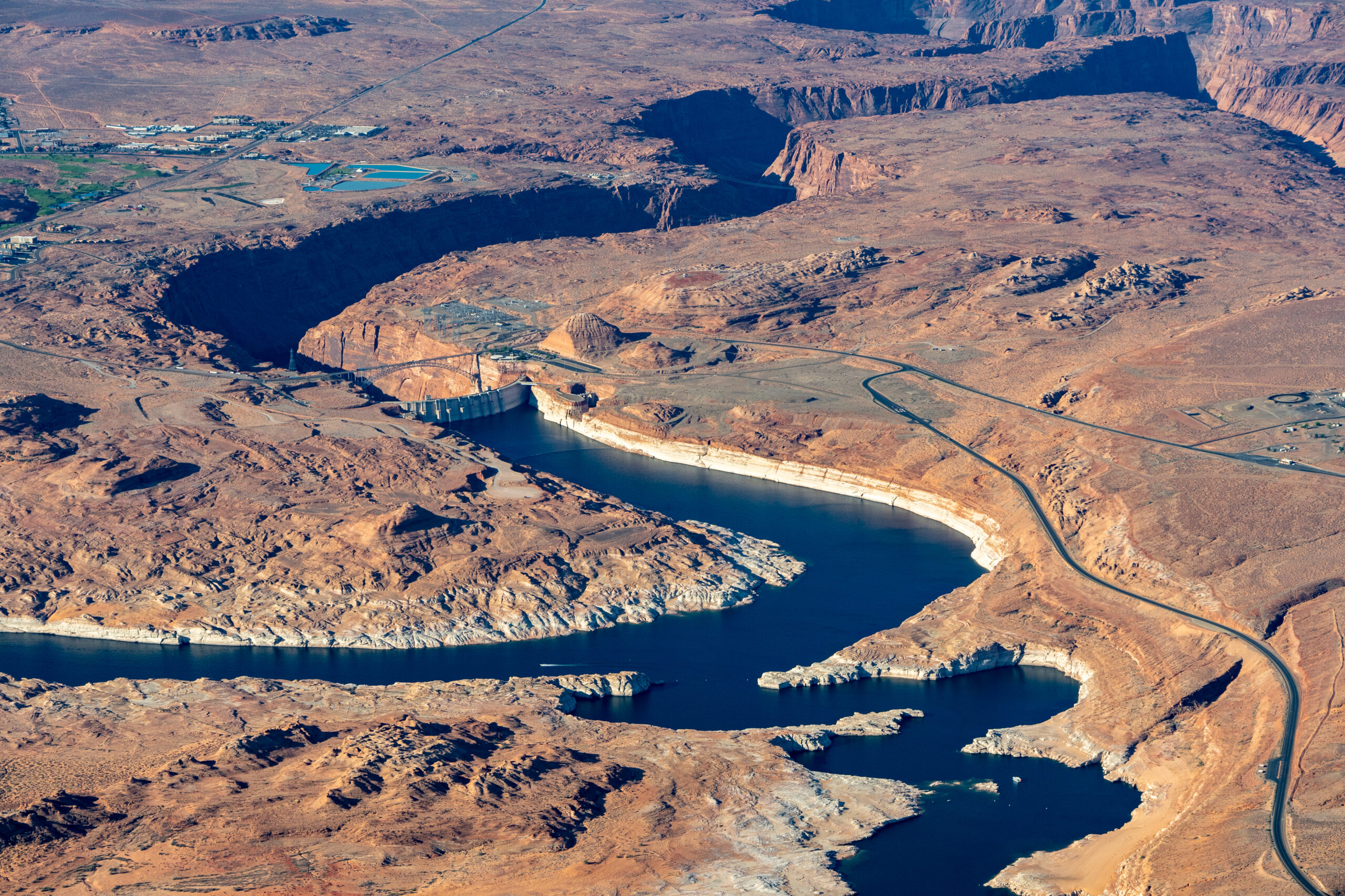Colorado River states agree to federal request to hold back water in Lake Powell

In a letter sent Friday, the seven states that use the Colorado River agreed with the U.S. Department of Interior and recommended that federal water managers take an emergency action aimed at stabilizing a dwindling Lake Powell, one of the main storage reservoirs on the river.
Earlier this month, federal water managers warned the states, including Nevada, that they were considering an emergency action to hold water back in Lake Powell, an attempt to stabilize the reservoir at serious risk of losing the ability to generate hydropower and deliver water to Page, Arizona, a city with roughly 7,500 residents, and the LeChee Chapter of the Navajo Nation.
Under the existing operating rules governing the Colorado River, the federal government was required to release 7.48 million acre-feet of water from Lake Powell downstream to Lake Mead, which stores water for Arizona, California, Nevada and the country of Mexico (an acre-foot is the amount of water that can fill one acre of land to a depth of 1 foot). But such a release would have led to further declines at Lake Powell, adding to the risk facing the Colorado River Basin.
As a result, the U.S. Department of Interior asked the states to consider a deviation from the existing operating rules — to hold back 480,000 acre-feet in Lake Powell. On Friday morning, representatives from the seven states within the Colorado River Basin sent the Department of Interior a joint letter agreeing with the proposed action, but requested that it “be implemented in a manner that is operationally neutral” so as not to trigger cuts for any state.
“It is our collective judgment that additional cooperative actions should be taken this spring to reduce the risk of Lake Powell declining below critical elevations,” state representatives wrote.
In an interview Friday, John Entsminger, the general manager of the Southern Nevada Water Authority, said that the letter “underscores the seriousness of the hydrologic situation as a very real threat to the infrastructure of Glen Canyon Dam,” which holds back Lake Powell.
“But,” Entsminger added, “it also represents that the seven states that share the river continue to be able to come together and make uniform proposals for how to address the situation.”
While such a move would bolster the water elevations at Lake Powell, curbing an immediate risk of hydropower losses, it would accelerate the physical decline of Lake Mead by about 7 feet. Over the past two decades of drought, the country’s largest manmade reservoir has dropped, with a notable bathtub ring marking where the water line once stood when the lake was full.
The elevation of Lake Mead is an important marker for Arizona, California and Nevada, the Lower Colorado River Basin states that rely on it. Lake Mead’s elevation is what triggers water cuts and reductions, in accordance with a Drought Contingency Plan that was signed in 2019. In the letter, all seven states agreed that keeping water in Lake Powell should not trigger deeper cuts.
But a deeper tier of cuts could be coming regardless, as the amount of water consumed by the states continues to exceed the amount of water entering the Colorado River in recent years. In addition to existing imbalances between supply and demand, scientists have observed a decline in snowmelt and runoff into the river, attributed to higher temperatures fueled by climate change.
The Colorado River Basin has seen two back-to-back dry years — with another below-average season of runoff expected this year. Indeed, forecasts already suggest that Lake Mead could drop below a critical elevation, triggering a new round of cuts for Lower Basin states next year.
But for now, the focus is on addressing the immediate crisis that is unfolding at Lake Powell by adjusting where water is stored throughout the system. In addition to the action outlined in the letter, states in the Upper Colorado River Basin — Colorado, New Mexico, Wyoming and Utah — have agreed to send more water, about 500,000 acre-feet, downstream in Lake Powell.
Of the seven-state letter and the decision to hold back more water in Lake Powell, Entsminger said: “We have characterized, in the letter the seven states sent today, [this as] a temporary operationally neutral action, but we also recognize that this is an action for one year and we're going to need to be continually evaluating what additional steps may need to be taken.”
